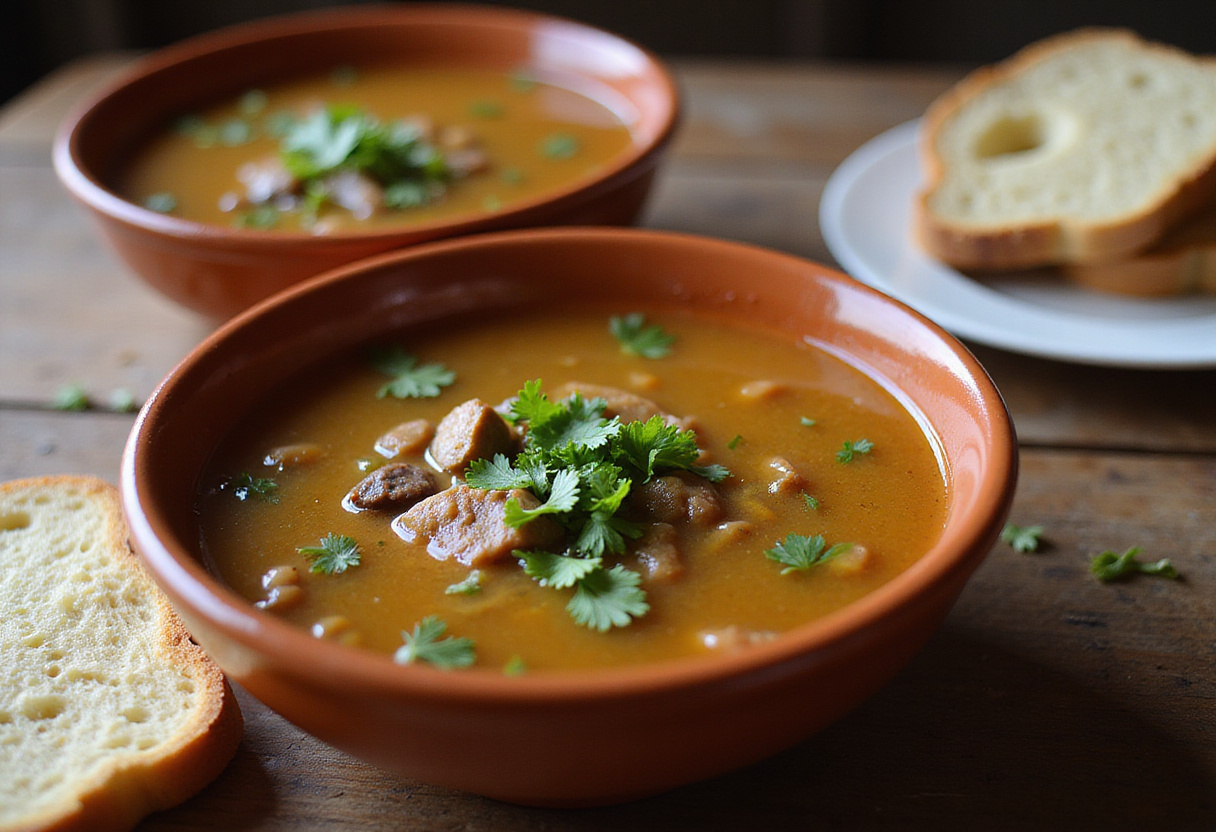Best Way to Make Recipes With Beef Broth at Home? 🍲🥩🏡
1. Introduction
Creating truly memorable and flavorful dishes often starts with a great foundation, and nothing quite beats the rich, savory depth that homemade beef broth brings to your meals. Imagine the possibilities – from hearty, comforting soups to intensely flavorful stews and delectable sauces. Mastering the art of homemade beef broth recipes will undeniably elevate your cooking from simple to spectacular. In this guide, we’ll meticulously explore the very best methods for making your own beef broth right at home, ensuring you extract the maximum flavor and goodness from every single drop. Learn the secrets to transforming humble ingredients into liquid gold. We’ll provide essential beef broth cooking tips so you can enhance a variety of dishes, including truly delightful and nourishing beef soup recipes. Are you ready to improve your beef broth experience and make many beef shank recipes? So, let’s dive in and discover how to create the ultimate homemade broth recipe!
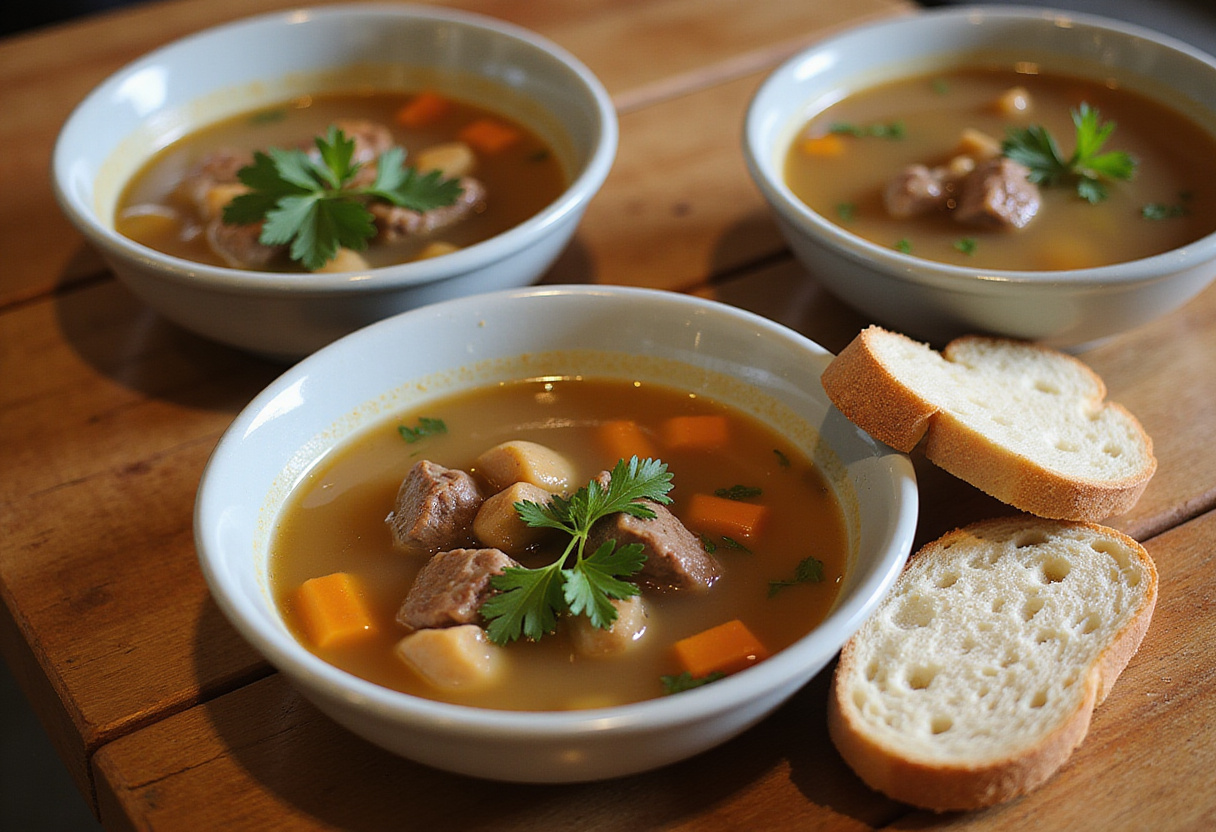
2. Why Make Beef Broth at Home?
Making homemade beef broth offers a plethora of advantages over its store-bought brethren. Firstly, and perhaps most importantly, you have complete and utter control over every single ingredient that goes into your broth. This crucial control ensures there are absolutely no unwanted additives, questionable preservatives, or excessive and often hidden sodium. This level of transparency and control is incredibly valuable, particularly for those with specific dietary restrictions, allergies, or simply strong preferences for natural, wholesome foods. Secondly, the pure, unadulterated flavor of true homemade beef broth is utterly unparalleled. The patient, slow simmering process meticulously extracts the maximum flavor from the beef bones and carefully selected vegetables, resulting in a deeper, richer, and far more complex taste profile that elevates virtually any dish it graces. Lastly, making your own beef broth is surprisingly a cost-effective way to cleverly utilize leftover bones and those often-discarded vegetable scraps, thereby reducing food waste and simultaneously creating a valuable and versatile kitchen staple that you can use for beef shoulder roast recipe.
3. Essential Ingredients for Beef Broth
- Beef Bones: Marrow bones and meaty bones, such as shanks or short ribs, are undeniably ideal for achieving maximum flavor extraction. If you are interested in something that uses shanks, consider enjoying how do you make beef shank stew?
- Aromatics: Onions, carrots, and celery form the backbone of the classic mirepoix, expertly providing a solid foundation of layered flavor.
- Herbs and Spices: Bay leaves, peppercorns, and fragrant thyme work synergistically to add captivating depth and enticing complexity.
- Water: Filtered water is by far the best choice to ensure a clean, pure, and uncompromised broth.
4. Step-by-Step Guide to Making Beef Broth
1. Roasting the Bones
Preheat your oven to a precise 400°F (200°C). Carefully place the selected beef bones on a sturdy baking sheet, ensuring they are spaced adequately for even roasting. Roast these bones for a significant 30-40 minutes, or until they achieve a deeply browned and richly caramelized appearance. The crucial step of roasting is paramount, as it significantly enhances the overall flavor profile of the bones, ultimately imparting a richer, more robust, and wonderfully caramelized taste to the finished broth. This stage is absolutely crucial for achieving a truly robust and flavorful homemade beef broth.
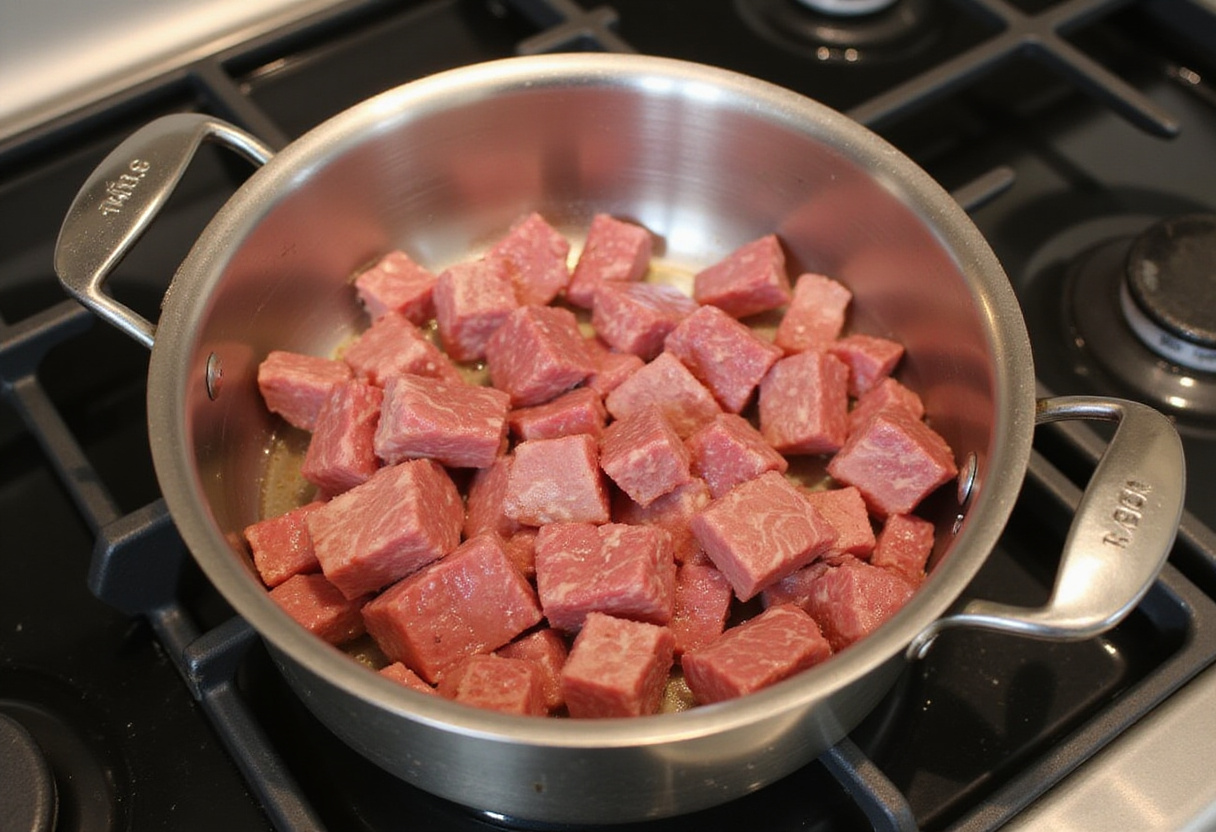
2. Sautéing the Vegetables
In a large, heavy-bottomed stockpot, gently sauté the carefully chopped onions, carrots, and celery in a small amount of high-quality olive oil or your preferred cooking oil until they soften beautifully and begin to develop a rich, golden color. This crucial step, much like the roasting process, expertly coaxes out the natural sweetness and inherent depth of the vegetables, ultimately contributing to a more complex and intensely flavorful homemade broth recipe. For an added layer of complexity and richness, consider deglazing the pot with a generous splash of dry red wine (this is, of course, entirely optional). As the wine simmers, use a sturdy spoon to meticulously scrape up any flavorful browned bits that may have adhered to the bottom of the pot during sautéing. These seemingly insignificant bits are packed with concentrated flavor and will undoubtedly add another dimension to your final broth.
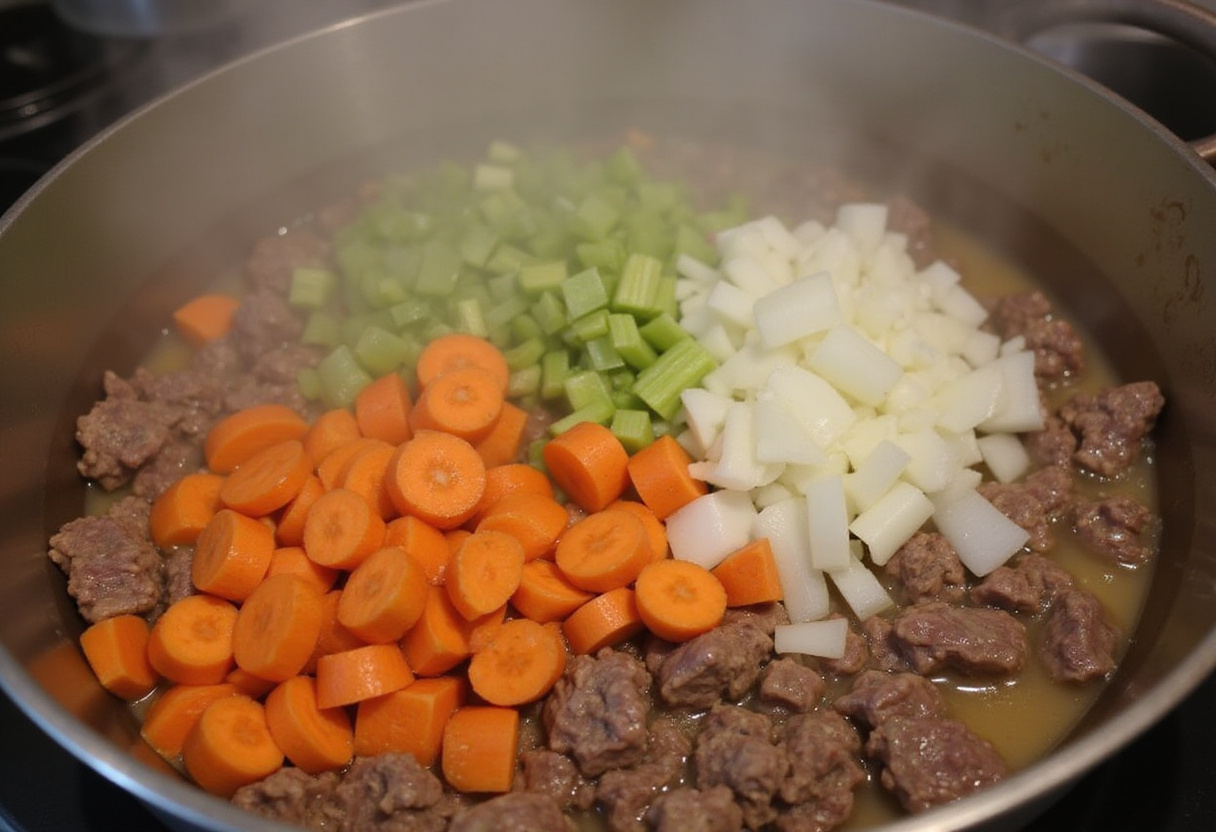
3. Combining Ingredients and Simmering
Carefully add the beautifully roasted bones, the perfectly sautéed vegetables, fragrant bay leaves, whole peppercorns, and fresh or dried thyme to the prepared stockpot. Gently pour in enough cold, filtered water to completely cover all of the ingredients. Bring the mixture up to a gentle simmer over medium heat, then immediately reduce the heat to the lowest setting possible. Allow the broth to simmer gently and patiently for at least 4-6 hours, or even longer if you desire an even more intense and concentrated depth of flavor. During the extended simmering process, be sure to periodically and meticulously skim off any foam or impurities that may rise to the surface. This step is crucial in ensuring that your final broth is beautifully clear and free from any unwanted sediment. If you love the taste of beef, maybe you’d consider more recipes with beef broth?
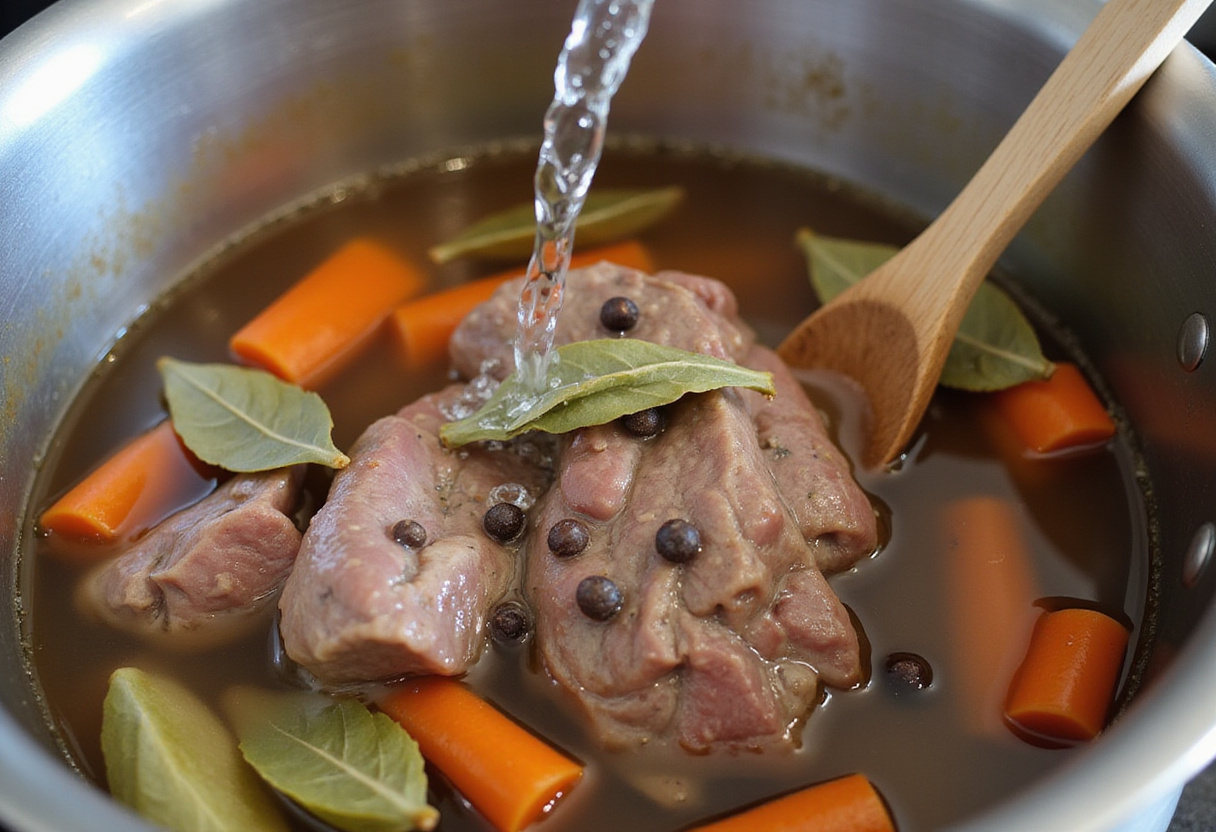
4. Straining and Cooling
Once the broth has simmered for the desired duration, carefully and thoroughly strain it through a fine-mesh sieve. For optimal clarity, line the sieve with several layers of cheesecloth. This will effectively remove all solid particles, leaving you with a beautifully clear and flavorful broth. Allow the strained broth to cool slightly at room temperature before transferring it to airtight containers. Once cooled, refrigerate the broth promptly for up to one week. For longer-term storage, freeze the broth in convenient individual portions using ice cube trays, freezer-safe jars, or heavy-duty freezer bags. Properly frozen broth can maintain its quality and flavor for several months, ensuring you always have a readily available and flavorful base for your favorite beef soup recipes and an array of other culinary creations. Before using the refrigerated broth, skim off any solidified fat that may have accumulated on the surface. This fat can be discarded or reserved for other cooking purposes if desired. If you enjoy slow cooking, find out is beef shank good for slow cooking?
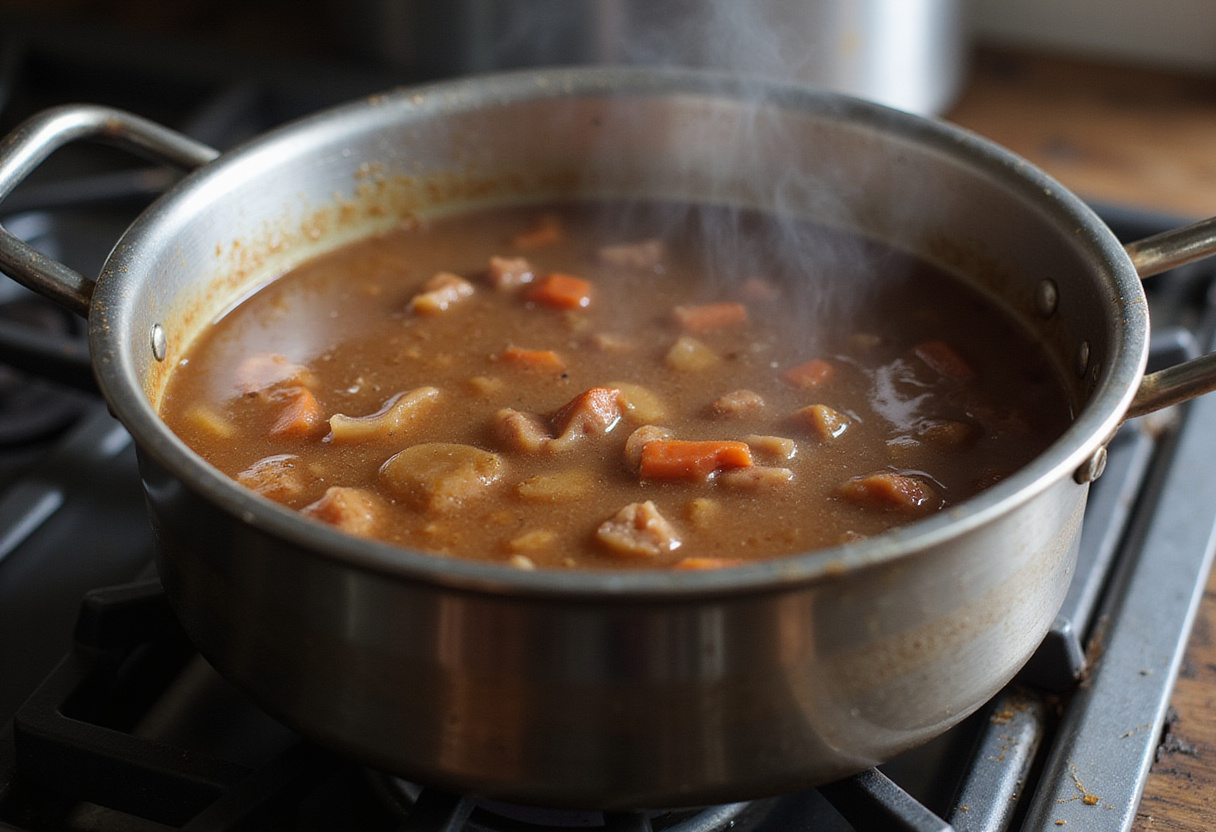
5. Tips for Enhancing Flavor
- Never skip the roasting step for both the bones and the vegetables. This seemingly simple step significantly and profoundly deepens the overall flavor profile of the finished broth.
- Utilize a variety of beef bones, including rich marrow bones and flavorful meaty bones, to create a beautifully complex and exceptionally rich broth.
- Add a splash of raw, unfiltered apple cider vinegar to the pot during simmering. The acidity in the vinegar helps to extract more collagen from the bones, resulting in a more highly gelatinous and incredibly luscious broth.
- Allow the broth to simmer for an extended period of time. This patient simmering allows the flavors to fully develop, meld together harmoniously, and intensify beautifully.
- Adjust the seasoning with sea salt and freshly ground black pepper to your personal taste preferences only after the broth has been fully strained. This allows you to accurately assess the broth’s final flavor before seasoning.
6. Delicious Recipes Using Beef Broth
Now that you’ve masterfully created your own batch of intensely flavorful homemade beef broth, an entire world of culinary possibilities lies before you. Here are just a few inspiring ideas to get you started on your culinary adventure:
- Beef Stew: A timeless classic and ultimate comfort food, featuring tender, melt-in-your-mouth beef, an assortment of hearty vegetables, and a luxuriously rich and deeply flavorful beef broth base.
- French Onion Soup: Sweet, caramelized onions simmered to perfection in a robust beef broth, then topped with toasted, crusty bread and a generous blanket of perfectly melted Gruyère cheese.
- Beef Noodle Soup: A supremely hearty and nourishing soup, perfect for chasing away the chill on cold days. This soup features tender chunks of beef, comforting noodles, and a medley of your favorite fresh vegetables, all swimming in a savory beef broth. Also consider, what are some keto recipes using beef mince!
- Risotto: Elevate your risotto to new heights by using flavorful beef broth instead of the more traditional chicken broth. The beef broth will impart a richer, deeper, and more intensely savory flavor to this classic Italian dish.
- Gravy: Create a luscious and incredibly flavorful gravy by thickening your homemade beef broth with a simple roux (a mixture of butter and flour) or a cornstarch slurry. This gravy is perfect for serving over roasts, mashed potatoes, or even biscuits.
7. Storing Your Homemade Beef Broth
Proper storage techniques are absolutely essential to maintaining both the pristine quality and the optimal flavor of your carefully crafted homemade beef broth. Once the broth has cooled completely, transfer it to airtight containers, such as glass jars or food-grade plastic containers. Store these containers in the refrigerator for up to one week. For longer-term storage options, consider freezing the broth in convenient individual portions. You can use ice cube trays for small amounts, or freezer-safe jars or bags for larger quantities. Properly frozen broth can maintain its delicious flavor profile for several months, ensuring that you always have a readily available and flavorful foundation for your favorite beef soup recipes and all of your other cherished dishes. If you want something quick to make, then discover how do you make keto beef mince stir fry?
8. Troubleshooting Common Issues
- Broth is Cloudy: This undesirable cloudiness is often caused by boiling the broth too vigorously during the simmering process. Ensure that you are only gently simmering it over very low heat.
- Broth Lacks Flavor: If your broth tastes bland or lacks depth, try roasting the bones and vegetables for a longer period of time to develop more intense flavors. Additionally, make sure you are using a sufficient quantity of bones in relation to the amount of water.
- Broth is Too Salty: To avoid an overly salty broth, refrain from adding any salt until after the straining process is complete. Add salt sparingly and always taste as you go, adjusting to your personal preference.
9. Conclusion
Mastering the art of homemade beef broth recipes is an incredibly rewarding culinary skill that will undoubtedly enhance the depth, complexity, and overall flavor of countless dishes you prepare. By diligently following our comprehensive beef broth cooking tips, you can confidently create a truly superior broth that far surpasses any commercially produced, store-bought alternatives in terms of both taste and quality. Don’t be afraid to experiment with different combinations of bones, vegetables, and herbs to create your own unique and personalized signature homemade broth recipe. Embrace the rich, savory goodness of your homemade broth in all of your favorite beef soup recipes, stews, sauces, and other comforting culinary creations. Happy cooking and bon appétit!
“`
Print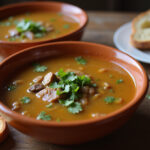
Best Way to Make Recipes With Beef Broth at Home?
- Total Time: 4 hours 20 minutes
- Yield: 8 cups 1x
- Diet: Gluten-Free, Paleo
Description
Learn how to make rich and flavorful homemade beef broth with this easy step-by-step guide. Elevate your soups, stews, and sauces with the best beef broth recipe.
Ingredients
- 3–4 lbs Beef Bones (marrow bones, shanks, or short ribs)
- 2 large Onions, roughly chopped
- 3 large Carrots, roughly chopped
- 3 Celery stalks, roughly chopped
- 2 Bay Leaves
- 1 tbsp Black Peppercorns
- 2 sprigs Fresh Thyme
- 12 cups Filtered Water
- 1 tbsp Apple Cider Vinegar (optional)
- Salt and Pepper to taste
Instructions
- Preheat oven to 400°F (200°C). Roast beef bones on a baking sheet for 30-40 minutes until deeply browned.
- In a large stockpot, sauté onions, carrots, and celery in oil until softened. Deglaze the pot with a splash of red wine (optional), scraping up browned bits.
- Add roasted bones, sautéed vegetables, bay leaves, peppercorns, and thyme to the stockpot.
- Pour in enough cold water to cover the ingredients. Add apple cider vinegar if using.
- Bring to a simmer, then reduce heat to low. Simmer gently for at least 4-6 hours, or longer for a more intense flavor. Skim off any foam or impurities.
- Strain the broth through a fine-mesh sieve lined with cheesecloth.
- Allow to cool slightly, then transfer to airtight containers. Refrigerate for up to a week or freeze for longer storage. Skim off any solidified fat before using.
Notes
- Roasting the bones and vegetables enhances the flavor significantly.
- Use a variety of beef bones for a richer broth.
- Adding apple cider vinegar helps extract more collagen from the bones.
- Simmering for an extended period allows flavors to fully develop.
- Adjust seasoning with salt and pepper to taste after straining.
- Prep Time: 20 minutes
- Cook Time: 4 hours
- Category: Soup, Broth
- Method: Simmering
- Cuisine: American
Nutrition
- Serving Size: 1 cup (240ml)
- Calories: 50 Kcal
- Sugar: 1g
- Sodium: 75mg
- Fat: 3g
- Saturated Fat: 1g
- Unsaturated Fat: 2g
- Trans Fat: 0g
- Carbohydrates: 2g
- Fiber: 1g
- Protein: 5g
- Cholesterol: 5mg
Keywords: beef broth, homemade broth, beef broth recipe, homemade beef broth recipe, beef broth cooking tips, how to make beef broth, bone broth, beef stock

